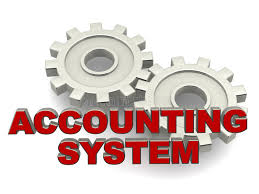The common goal of every business is to ensure it yields enough cash to cover various expenses while still making a profit. Every investor wants a company that has a positive cash flow. This article explores everything about cash flow. Ranging from definitions to types of cash flow and format. It also includes a format and step-by-step guide on how to calculate cash flow with examples.
What is Cash flow?
Cash flow is the accumulative amount or net amount of money a firm or business has. In other words, it is the amount of cash that a business makes over a period of time.
Interestingly, the value of most businesses is based on the amount of cash flow they have. whereas a positive cash flow will attract more investors and also allow the company to reinvest. When there is enough inflow of cash the company can as well pay its debts.
Positive and Negative Cash Flow
A flow of cash is positive in a firm when the income is greater than the expenses i.e. they make profit. On the other hand, cash flow is negative when a business spends more than it earns. Which means they are making loss.
The volume of cash flow can also be checked by using financial statements, which is very essential in finance. These statements will enable firms to measure the volume of their positive or negative financial flow. Knowing the types of this cash flow can also go a long way.
Types of Cash Flow
There are 3 types of Cash flow, having a good understanding of every one of them is a great way to improve financial accounting. Understanding these methods that cash flow will also help you identify them even without being mentioned. The types of cash flow include;
#1. Cash from Operating Activities:
This is cash that the business or firm makes from business activities. For instance, the money made from selling goods and services also including the expenses made. Because they all make up the net income of the company or business.
#2. Free Cash to Equity (FCFE):
This can also be called “investment activities.” It means the amount of cash remaining after reinvesting back into the business. For instance, a company might decide to rent some of its space and then reinvest the money gotten from it into the business. This type of cash flow, however, includes noncurrent assets.
#3. Free Cash Flow to the Firm:
This can also be called “financial activities.” It is the amount of money flow that changes over a period of time especially within the time the firm does accounting.
Why is Cash Flow Important?
Every business has regular bills to pay and income to earn, from paying salaries to buying raw materials to selling goods and services. All these are the ways money flows on a daily basis in business. Since it’s now obvious that there must be circulation of cash in every business, we will now answer the question above why is it important? This applies to all types of cash flow.
#1. It makes the business more profitable:
First, it is important to know that cash flow doesn’t mean profit. But if properly managed, it can yield a profit. For instance, a company sells goods worth $2000. and then pay a tax of $200. while paying off their debt of $600. –say this business has 10workers that it pays $150 monthly. If this business doesn’t have a cash reserve, it means it can’t pay all its workers and certainly would go bankrupt soon. A proper flow of money in a business certainly means that things are going well, which means the business is profitable.
#2. Easier payment of debts:
Having a steady positive fund flow can help you borrow money without fidgeting. Because literally, when you are a debtor, it simply means you have used your future money. How much more when you are almost certain it will be a positive flow. In other words, positive fund flow can help you manage your debts properly
#3. Opens doors to great opportunities:
A company with a good fund flow is very attractive to investors. The company also has a great opportunity for improvement in training, technology, assets. All these are forms of reinvestments a company can do if they have a strong money flow.
Cash Flow Format
There are two cash flow formats. The direct and indirect types. The operating system is the only difference.
#1. The direct method
This shows the gross cash payment and the gross cash receipts. In other words, it adds various types of cash payment, including the ones paid to suppliers and those paid as salaries. They are calculated using two balances which are the beginning and ending balances of a business account. All this will happen while examining the increase or decrease of the accounts.
#2. Indirect method
On the other hand, the indirect method first calculates the flow of money from operating activities. At the same time using the company’s income statement to calculate the net income. Most companies use the accrual method to do this which is a type of financial accounting. In most cases, the indirect method adds some non-operating activities like depreciation.
In the cash flow format, there are four things that are involved in writing every cash flow statement. Cash loow from;
- Operating Activities
- Financing Activities
- Investing Activities
Operating Activities Cash Flow Format
This is usually the fist in the cash flow statement. Which is because it shows the amount of money from a company’s day to day business activities, such as producing goods, selling goods and services, interest payment, income payment tax, rent payments, etc. It is also Important to know that this operating activities does not include investments or expenses.
Investing Activities Cash Flow Format
It will include all uses and the sources of the cash from everything the company has invested. Everything the company has ever purchased, sold, lent or even received will be added in this category. For instance, if the company should buy new equipment, assets or make investments. It will equally be added to this category.
Finance Activities Cash Flow Format
Financial activities are made up of cash from investors or bank, it also includes cash paid to shareholder, repayment of loans, and payment of dividends. For instance, if a company issues a bond to the public, the company will record it as financial activities. There are certain changes in cash financing, “cash in”- increase in capital and “cash out” -dividends are paid.
List of profitable small businesses: top 35 (+ detailed guide)
How to Calculate Cash Flow
The most common way to calculate money flow is to use the cash flow statement. This cash flow statement will indicate the accurate flow of funds in and out of your business within a specified period of time. In finance, it is one of the core financial statements needed in a business.
Here is a simple cash flow format;
Cash from operating activities + (-) investing activities + (-) financing activities + Beginning Cash balance = Ending cash balance.
In addition, it is important to know that the cash flow format uses everything in your balance sheet, including profit and loss statements, because all of this shows the sources of your money within that specific period of time.
Cash Flow Examples
Example1
In this cash flow example, a company named Q Factor has $130,000 of annual profit but only a $10,000 closing amount by the end of the year.
Cash from operating activities = $80,000 + (-) money from investing activities = $50,000 + (-) from financing activities = $40,000 + Beginning cash balance = $15,000 = Ending cash balance = $10,000
Here is how they calculated the flow of their cash;
| Net Income | $130,000 | |
| Income not paid by customers | ($80,000) | |
| Expenses not paid to vendors | $25,000 | |
| Cash flow from Operations | $80,000 | |
| Investment (machines) | ($45,000) | |
| Cash from Investing | ($50,00) | |
| Company’s draw | ($35,000) | |
| Cash from financing | ($40,000) | |
| Beginning cash | $15,000 | |
| Ending cash | $10,000 |
This cash flow example showed in detail how Q factors managed their money and the details of the activities that influence the cash inflow and outflow. This will help Q factors be analyzed better in other to have a more positive cash flow in the future.
Example 2
In this example of cash flow, there is a detailed statement on how company A calculated their money flow.
Company A’s Cash Flow Statement
| Cash From Operations | 3,000,000 |
| Net Earnings | |
| Addition to Cash | |
| Depreciations Decrease in Accounts (Receivable) Increase in Accounts (Payable) Increase in Taxes Payable | 10,000 25,000 18,000 3,000 |
| Subtractions from Cash | |
| Increase in Inventory | 40,000 |
| Net Cash from Operations | 3,016,000 |
| Cash from Investing | |
| Machines | 700,000 |
| Cash from Financing | |
| Payable Notes | 15,000 |
| Company A’s Ending cash | 2,300,000 |
The above cash flow examples can serve as a template for you to calculate your own financial flow.
Tips to Improve your Cash Flow
At this point, I am sure you have come to understand how important positive money flow is for your business. Meanwhile, you might be wondering how you can increase fund flow in a business, here are some strategies below;
#1. Incentives for Early payments
Offering incentives to customers who pay on time is definitely one way to encourage all customers to pay on time. This means you have more cash and are on time, too. However, sending out invoices early also help customers pay up early.
#2. Be Careful with Credit Sales
You should know that any customer who doesn’t give you cash is a creditor, even if you have made the sale. Moreover, credits don’t add to your cash. Even if you must supply on credit, you have to be ensure that the customer has a good reputation by doing some credit checks.
#3. Inventory Check
To increase fund flow, you will need to carry out an inventory check. Take note of all the goods or services that don’t give you enough cash and try to reduce how much you invest in them. Even if the product or service is just slow, it reduces your money flow because you won’t get early returns from it. If you don’t do this from time to time, you might get your money tied up in particular goods or services. Also, be sure not to tie your emotions to any particular product.
#4. Increase in Price
It’s quite unfortunate that most business owners always feel skeptical about increasing their prices. Whenever there is an increase in the cost of production, no matter how little, it should definitely reflect in your prices, don’t wave it off! Don’t assume you will lose customers when you haven’t even tried.
You can also use some customer retention strategies to increase your money flow.
Note: Managing money flow in a business needs a high level of financial literacy. Therefore, employing someone with the skills would go a long way.
Is Cash Flow Same as Profit?
The primary distinction between cash flow and profit is that the latter measures the net flow of cash into and out of a business, while the former measures the amount of money left over after all expenses have been deducted.
What is a Good Cash Flow Rate?
Financial distress is indicated by a quick ratio below 1, whereas a healthy one above 1 implies that current cash flows more than cover current liabilities.
What does a Good Cash Flow Look Like?
Financial health is typically defined as the ability of an organisation to generate more income than it expends on a regular basis. A company’s financial health and its ability to meet its obligations are reflected in its cash flow. The better off a company is in general, the more liquid assets it has.
Is Cash Flow more Important than Profit?
Though profits are great to have, maintaining a steady stream of revenue is what really keeps the wheels turning for any business. Not making a profit can hurt cash flow in the long run.
What is Cash Flow in NPV?
In order to determine a project’s NPV, the present value of all cash flows during the project’s lifetime must be determined. The initial investment is then diminished by the discounted future cash infusions, or present value. It will be financially successful if the difference is bigger than zero.
Is Cash Flow just Revenue?
Earnings that come in as a result of the sale of a company’s goods or services are known as revenue. What we mean when we talk about a company’s cash flow is the net amount of money coming into and going out of the business. Cash flow is more of a liquidity indicator, while revenue is a measure of the efficiency of a company’s sales and marketing.
Does Cash Flow Include Salaries?
Cash flow, as opposed to profit, includes both the inflow and outflow of money for a business. Cash flow consists not just of purchases and expenses but also of payments made, such as those made on credit cards or loans, as well as payroll and sales tax obligations and owner’s draws.
FAQ
What is cash flow?
Cash Flow is the accumulative amount or net amount of money a firm or business has. In other words, it is the amount of cash that a business makes over a period of time.
What are the 3 types of cash flows?
Understanding these methods that cash flow will also help you identify them even without being mentioned. The types of cash flow include;
- #1. Cash from Operating activities:
- #2. Free Cash to Equity (FCFE):
- #3. Free Cash Flow to the Firm:






